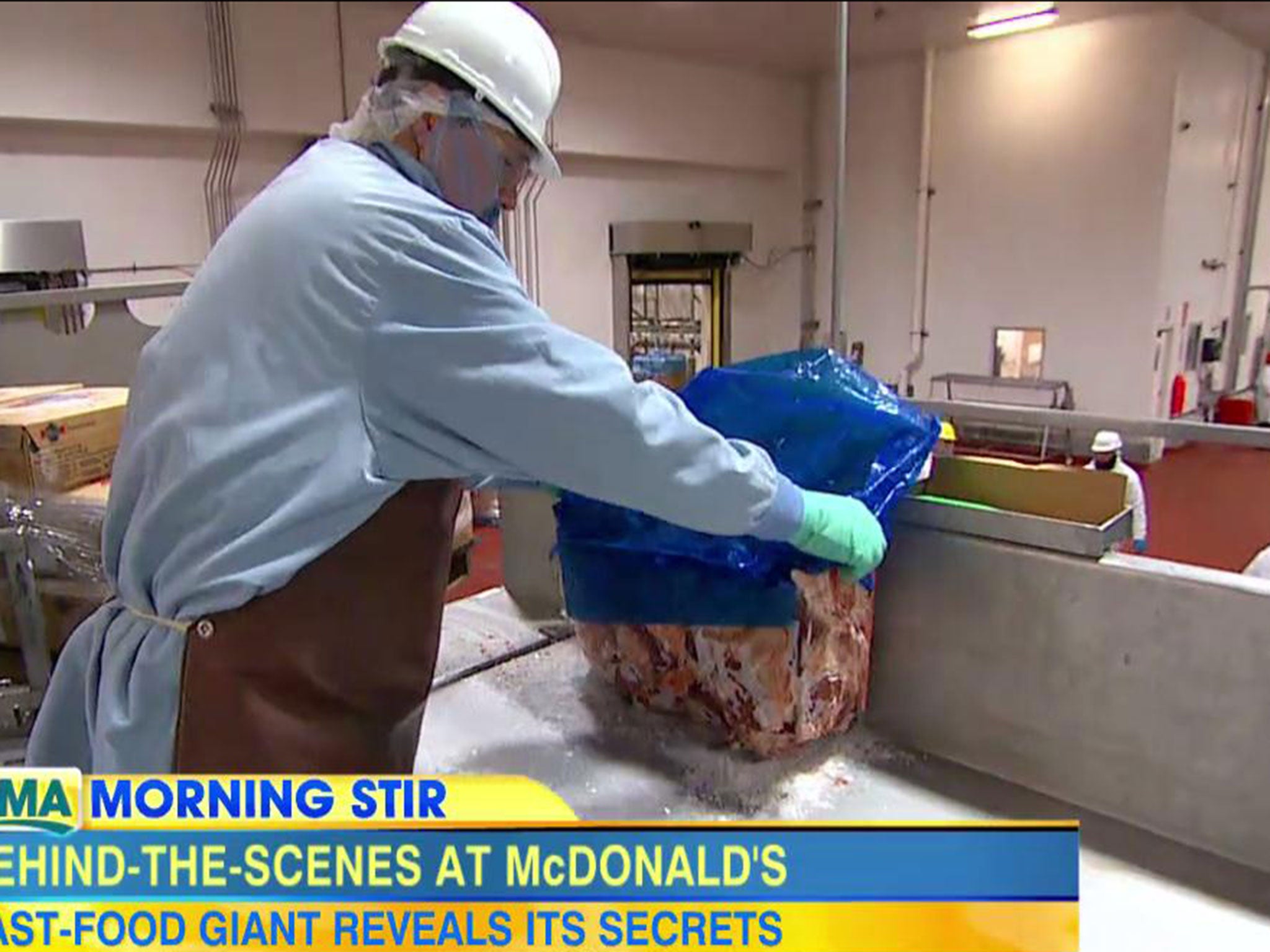McDonald’s answers pink slime and worm meat rumours by inviting cameras into a burger factory
Fast food chain shows consumers what really goes into their burgers

McDonald’s has invited an external camera crew inside their factories for the first time to show consumers exactly what goes into their burgers.
The fast food group welcomed a crew from Good Morning America (GMA) into their California plant as it the launched its new ‘Our Food. Your Questions' series, which aims to confront what it says are misconceptions about the meat used in its products.
McDonald's is hoping their campaign will dispel the unappetising rumours about ‘pink slime’, worm meat and other burger fillers that have long haunted the chain.
The company is also inviting the public to send questions via Twitter and Facebook about what actually goes into their food.
Among the many stubborn rumours circulating on social media for years include claims about burgers that never rot.
McDonald's has begun tackling these rumours head on by addressing the videos that show its burgers staying in tact after several weeks or even years.
On its website homepage, it said this is likely to have occurred because the product has dehydrated and food needs moisture to form mould.
Another question on its US homepage asks: “Does McDonald’s beef contain worms?” to which the answer is simply “No. Gross! End of story.”
A video posted as part of the campaign showed Grant Imahara, a former host of the TV show Mythbusters, touring a Cargill beef plant where McDonald's burgers are made.
"Are there lips and eyeballs in there, Jimmy?" Imahara asks a plant supervisor, who explains the patties only have beef trimmings.
In the video, the chain is also keen to make clear that so-called pink slime, or lean textured beef trimmings treated with ammonia, has not been used in their burgers since 2011.
However, in a news release on its website, it said that “to assist with supply”, McDonald’s US, “like many other food retailers”, used 'pink slime' in its burgers between 2004 and 2011.
It also admits to using azodicarbonamide (ADA) in its buns and rolls to keep the bread consistent in each batch.
“There are varied uses for azodicarbonamide, including in some non-food products, such as yoga mats,” a statement explains. “As a result, some people have suggested our food contains rubber or plastic, or that the ingredient is unsafe.
“It’s simply not the case. Think of salt: the salt you use in your food at home is a variation of the salt you may use to de-ice your sidewalk. The same is true of ADA — it can be used in different ways.”
McDonald's meals around the world
Show all 14In another issue likely to prove contentious, the company says the cattle it uses to source its beef from are treated with growth hormones. A comment on their website states: “Most of the cattle we get our beef from are treated with added hormones, a common practice in the US that ranchers use to promote growth.”
The chain insists their new turn towards transparency is not linked to business performance. Instead, chief brand manager Kevin Newell told GMA the decision is linked to “making sure our customers truly know the story about McDonald’s food”.
Subscribe to Independent Premium to bookmark this article
Want to bookmark your favourite articles and stories to read or reference later? Start your Independent Premium subscription today.

Join our commenting forum
Join thought-provoking conversations, follow other Independent readers and see their replies